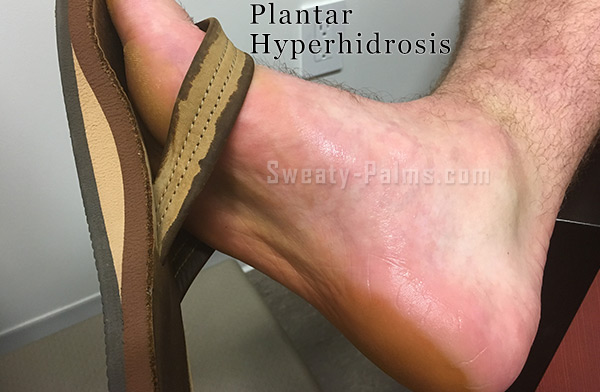Finest Dermatology Approaches for Sweaty Hands Treatment: Tips and Techniques
Finest Dermatology Approaches for Sweaty Hands Treatment: Tips and Techniques
Blog Article
Revealing the Complexities of Excessive Sweating: A Comprehensive Overview to Medical Diagnosis and Monitoring
Too much sweating, medically understood as hyperhidrosis, is a problem that affects a substantial number of individuals and can have an extensive effect on their quality of life. While sweating is an all-natural bodily function, its overactivity in hyperhidrosis provides a special set of challenges that often exceed plain discomfort. Recognizing the underlying causes, recognizing the symptoms, and navigating the analysis procedure for hyperhidrosis can be detailed tasks. In this extensive overview, we will explore the intricacies of hyperhidrosis, from its diagnosis to the array of treatment options offered, clarifying reliable administration methods for those facing this problem.

Recognizing Hyperhidrosis Causes
Hyperhidrosis creates can be attributed to numerous elements such as genetics, hormone discrepancies, and specific clinical conditions. Genetics play a considerable role in primary focal hyperhidrosis, where individuals acquire the problem from their household participants. By recognizing the particular elements adding to too much sweating, health care service providers can tailor treatment plans to address the underlying cause, supplying alleviation and improving the quality of life for people influenced by hyperhidrosis.
Acknowledging Hyperhidrosis Symptoms

Moreover, hyperhidrosis symptoms might materialize in social and emotional distress, as individuals might feel humiliated or distressed about their sweating, causing evasion of social circumstances (Exessive Sweating). In addition, duplicated episodes of too much sweating can lead to skin maceration, fungal infections, and a total decline in self-esteem
Diagnostic Refine for Hyperhidrosis
Launching the diagnostic process for too much sweating includes complete assessment of the person's case history and health examination. Inquiring concerning the start, period, and sets off of sweating episodes is important to set apart between main focal hyperhidrosis and secondary generalised hyperhidrosis. Clinical background ought to additionally include questions concerning medications, medical conditions, and family background of hyperhidrosis.
Throughout the checkup, specific interest is paid to the areas impacted by sweating. The healthcare provider might analyze the extent of sweating, check for indications of underlying conditions, and assess the impact of sweating on the individual's quality of life. Additionally, specific tests like the gravimetric test, starch-iodine examination, or skin conductance dimensions might be carried out to quantify the quantity of sweat created.
Moreover, in cases where secondary hyperhidrosis is thought, added examinations such as blood tests, pee tests, and imaging research studies index may be advised to recognize the underlying reason of extreme sweating. The diagnostic process intends to properly figure out the type and reason for hyperhidrosis to guide appropriate administration strategies.
Therapy Alternatives for Hyperhidrosis
When attending to too much sweating, various therapy choices are offered to ease signs and symptoms and improve the individual's quality of life. The treatment strategy for hyperhidrosis relies on the intensity of symptoms and the person's feedback to first treatments.
Topical treatments, such as aluminum-based antiperspirants, are often advised as the first line of protection for handling moderate situations of hyperhidrosis. For people with a lot anchor more severe signs, dental medications like anticholinergics might be suggested to help lower sweating.

Effective Management Methods
To properly handle hyperhidrosis, a comprehensive and individualized treatment strategy tailored to the client's specific demands and response to previous therapies is essential. This strategy might integrate a mix of restorative approaches, consisting of way of living alterations, topical therapies, dental medicines, botulinum toxic substance injections, iontophoresis, and in severe instances, medical treatments like gland removal or sympathectomy. Way of life alterations such as using moisture-wicking clothing, utilizing antiperspirants, and practicing stress-reducing strategies can match medical treatments. Topical antiperspirants containing aluminum chloride are typically the first-line treatment, with more powerful solutions available for immune cases. internet Oral drugs like anticholinergics may be recommended for generalized hyperhidrosis. Botulinum toxic substance injections are efficient for focal hyperhidrosis, offering momentary alleviation by blocking the release of acetylcholine. Iontophoresis, entailing making use of a low electric current to lower sweat gland task, can be beneficial for both palmoplantar and axillary hyperhidrosis. Surgical alternatives are normally reserved for severe, refractory cases and need mindful factor to consider of advantages and risks. A multidisciplinary approach entailing skin doctors, main treatment physicians, and, if needed, specialists, can maximize the administration of hyperhidrosis.
Conclusion
To conclude, hyperhidrosis is a condition defined by extreme sweating, which can considerably affect an individual's lifestyle. By understanding the reasons, recognizing the signs and symptoms, and going through the diagnostic process, health care carriers can effectively handle this problem. Therapy choices consist of topical drugs, dental drugs, shots, and even medical procedures in serious cases. With appropriate medical diagnosis and management approaches, people dealing with hyperhidrosis can discover relief and improve their overall wellness.
Extreme sweating, clinically understood as hyperhidrosis, is a problem that impacts a considerable number of individuals and can have an extensive influence on their top quality of life. By recognizing the certain factors contributing to extreme sweating, health care companies can tailor therapy strategies to attend to the underlying cause, using relief and improving the quality of life for people impacted by hyperhidrosis.
Hyperhidrosis, defined by extreme sweating beyond what is necessary for regulating body temperature, can considerably affect a person's high quality of life. Making inquiries concerning the onset, period, and sets off of sweating episodes is vital to distinguish between primary focal hyperhidrosis and additional generalised hyperhidrosis. Exessive Sweating.In conclusion, hyperhidrosis is a condition defined by excessive sweating, which can greatly affect a person's high quality of life
Report this page